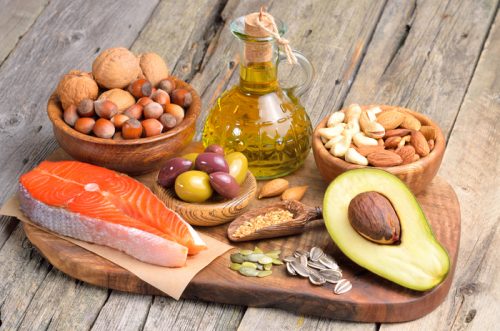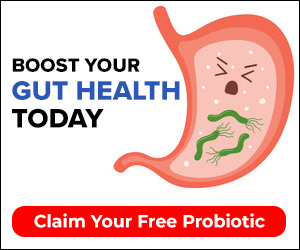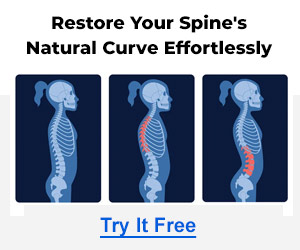Everywhere you look it seems that nearly everyone has some sort of medical condition. I’m not talking about the big issues like cancer or AIDS, more so the smaller common stuff that we hear about almost everyday. This seems to be the norm these days as unfortunate as it is.
But have you ever asked yourself why?
Think of five people that are close to you. Now of those five, I’m sure you can think of at least one ‘condition’ or ‘issue’ that they are dealing with. It could be something like a skin disorder, chronic headaches, sleep apnea, a dysfunctional thyroid and the list goes on and on.
And what about you? What are you currently dealing with?
We all have something going on and it could just be part of the natural aging process. Even though this process is inevitable, choosing healthier lifestyles can slow it down with the right techniques and certainly becoming more aware of the food and beverages we consume daily.
And this leads me into my next thought provoking questions; do you pay attention to WHY you choose the food that you do? And do you actually know what’s in the food you choose?

Out of those five people that you were told to think about earlier, ask them if they eat healthy. I think that both of us would bet that 4 out of your 5 would say, yes, they do eat healthy or at least ‘try’ to.
However, according to the Center of Disease Control (CDC) more than 80% of Americans fail to eat the recommended amounts of fruits and vegetables. [1]
It’s no wonder that when you read of simple stats like the one listed above, it makes sense that obesity, heart disease, and diabetes are extremely widespread right now within this country.
• 36.5% of U.S. adults are considered obese. [2]
• Number of adults with diagnosed heart disease: 27.6 million. [3]
• 29 million people in the United States have diabetes. [4]
It’s obvious that something within the system in which we live is terribly flawed.
It doesn’t take an expert to see that these statistics are driven by something of incredible power to reach these scary numbers. Nor am I just going to give you a list of risk factors associated behind these numbers or all the reasons why so many people are diseased. Instead I have chosen to investigate the emotional and perhaps the chemical reason behind why western culture eats and drinks the way it does.
Before we dive into what drives our hunger and appetite, here are 11 facts about American eating habits [5]:
1. In a 2012 study, 52% of Americans (that were polled) believed doing their taxes was easier than figuring out how to eat healthy.
2. At least 1 in 4 people eat some type of fast food every day.
3. Data from the U.S. Department of Agriculture found that in 2011 the average American consumed nearly one ton of food. That’s 1,996 pounds of food a year.
4. The U.S. Department of Agriculture’s tests have found widespread pesticide contamination on popular fruits and vegetables, also known as the “dirty dozen.”
5. The study also revealed some other interesting numbers. Americans ate: 632 lbs. of dairy products (including 31.4 lbs. of cheese), 415.4 lbs. of vegetables (most popular being corn and potatoes), 273 lbs. of fruit, and 183.6 lbs. of meat and poultry.
6. According to a 2012 Food and Health Survey, only 3 in 10 Americans believe that all sources of calories play an equal role in weight gain. Many Americans believe that carbohydrates, sugars, and fats are the key sources for weight gain
7. Americans consume 31% more packaged food than fresh food.
8. Healthiness of the food we eat decreases by 1.7% for every hour that passes in the day, meaning that people generally eat healthiest at breakfast and will most likely eat unhealthier food later in the day.
9. Over 10 billion donuts are consumed in the US every year.
10. 20% of all American meals are eaten in the car.
11. Americans spend 10% of their disposable income on fast food every year.
I love talking nutrition with people. Yes, this is my profession and it’s my job to help others on their way towards better health but I also love to learn ‘why’ people are doing what they are doing.
With that said, WHY did you decide to eat what you did for your last meal?
Availability? Ease? Lack of time? Had a craving? Personal preference?
If we can replace those answers with these words instead: beneficial, loaded with nutrients, energy booster, free of hormones/chemicals, and so on… I think we would be one step closer to making BIG changes to the way we eat.

Let’s look at genetics vs. experience.
When you eat, your brain combines the signals from these specialized taste (in the mouth) and olfactory (aroma in the nose) receptors to form a flavor. Flavor is further influenced by other perceived qualities, such as the burn of chili, the cooling of mint, or the thickness of yogurt.
Humans have about 35 receptors to detect sweet, salty, bitter, sour, etc. In addition to that humans have around 400 receptors to detect aroma. The receptor proteins are produced from instructions encoded in our DNA and there is significant variation in the DNA code between individuals.
In 2004, researchers identified that olfactory receptors were located in mutational areas of the skull. These regions have higher than normal genetic variation. Any of these genetic variants may change the shape of the receptor and result in a difference in perception of taste or aroma between people [6].
Another study showed that any two individuals would have genetic differences that translate to differences in 30% to 40% of their aroma receptors. This suggests we all vary in our flavor perception for foods and that we all live in our own unique sensory world. [7]
A more recent study stated that their ‘data suggests that taste perception of fatty acid can be altered by the diet, the relative influence of genetics in this process has yet to be explored. To ascertain the role, if any, of genetic factors surrounding the perception of fatty acid taste, future studies will need to evaluate the functional consequences of allelic variation in the receptors that mediate fatty acid taste, and the relative expression of these receptors on the tongue.’ [8]
Unfortunately how things sit today we are just beginning to understand how genes alter our sense of taste and smell, and how this may affect food preferences to consume healthier foods. Further research is needed to understand how multiple genes may combine to influence sensory perception and dietary intake.
However, the other side of the coin seems to be much shinier.
Continue with The Subconscious Eater Series, Part 2 – Our Emotional Connection to Food
FREE Report – Top 3 Natural Pain Relievers
By Brian Klepacki, MS, CISSN, CSCS
References
[1] https://www.cdc.gov/mmwr/preview/mmwrhtml/mm6426a1.htm
[2] https://www.nichd.nih.gov/health/topics/obesity/conditioninfo/pages/risk.aspx
[3] https://www.cdc.gov/heartdisease/facts.htm
[4] https://www.cdc.gov/features/diabetesfactsheet/
[5] https://www.dosomething.org/us/facts/11-facts-about-american-eating-habits
[6] http://journals.plos.org/plosbiology/article?id=10.1371/journal.pbio.0020029
[7] http://www.nature.com/neuro/journal/v17/n1/full/nn.3598.html
[8] http://www.nature.com/ijo/journal/v36/n6/full/ijo2011155a.html













































































